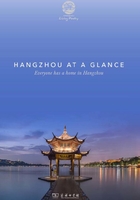

Geology, the tides, the climate—all played a role in creating the famous natural scenery of Hangzhou, but when it really comes down to it, Hangzhou’s nature is a millennia-old dance between mankind and the wild. It may not have the peaks of Tibet or the biological diversity of Yunnan, but Hangzhou speaks to a long history of humans and nature living side by side. From West Lake to the Qiantang River and from the Jade Emperor Hill to the Longjing Village, each bit of natural scenery in Hangzhou seems to tell a story of a land to be conquered by civilization only to be made calm by a love of poetry and beauty.
One would be forgiven for thinking that the Xixi wetlands have existed since the earth was young. In reality, seen from the sky, the wetlands appear as straightened, edged pools of emerald-green water carved to make way for sunshine. It wasn’t the planet that made it this way, rather generations of rulers, literati, and god-kings who wanted to expand upon the area’s natural splendor. Similarly, it was mankind that made West Lake a natural beauty, that carved it into a place of majestic marvels and religious wonders.
Today, the labors of the ancients can be seen in the cranes, egrets, and kingfishers of the Xixi wetlands, in the lotus and peach blossoms that dot and decorate nearly every step along West Lake, in the mallards and carp that populate and thrive in the city’s causeways and canals.
